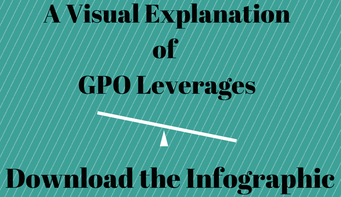When you are tasked with developing a Request for Proposal (RFP) it is tempting to find a template that has been used in the past in order to get things moving quickly. The problem with this method is that the "boiler plate" templates used in the past were likely designed for a very different situation than yours and designed to satisfy needs that may not parallel your company's needs. It can result in "boiling the ocean", collecting a lot of information that is irrelevant to your situation, and not getting the information you really need to make the right supplier selection decision.
It may take a little more time and effort, but the right way to create your RFP is to "build it backwards". You want to start with a solid understanding of what your end result needs to look like. The key steps in the process are:
- Understanding your company's needs and objectives to be accomplished by the sourcing effort
- Developing specific decision criteria for both quantitative and qualitative aspects of the desired solution
- Develop what the final analysis of the proposals looks like - the information you need to make your supplier selection
- Develop the RFP to collect the data required to conduct the analysis
Here's some quick insight into each of these steps.
1. Understanding your needs and objectives
This involves talking to the key stakeholders. This includes the users, subject matter experts, company management, finance, and safety - all who will have to live with the solution and be accountable for its impact on the company. To gain the most from this step, you'll need to develop qualitative and quantitative objectives of the effort.
Qualitative objectives may include things like:
- Access to innovation/technology
- Streamlined internal processes
- Improved sales
- Service levels Training and other support
- Implementation speed
Quantitative objectives may include things like:
- Cost reduction
- Inventory reduction
- Implementation costs
- Total Cost of Ownership reduction, e.g. sku rationalization, product substitution
During this step, you should interview some of the key potential suppliers to get their input on the "state of the art" of customer solutions in their industry. They are the experts and you need to benefit from their expertise at the outset of the effort.
2. Develop decision criteria
Once you know what you want, you need to put on paper what the key selection criteria are for each of the needs and objectives that have been defined. While also stating their importance in the supplier selection process. It's a good idea to get "sign off" from the key stakeholders before proceeding.
3. Develop the analysis templates and formats
In this step you need to define specifically what the analysis looks like for each of the criteria. For things like cost reduction this may be a cost savings analysis based on a "market basket" of items to be included in the RFP. For qualitative criteria it may be a scoring of supplier responses bucketed by each criteria.
4. Develop the RFP
At this point the job is easy. The RFP is simply a data collection device to get the specific information you need to conduct the analysis that you have already defined. It's a combination of questions to be answered to assess the degree to which they can meet your qualitative objectives and data templates to collect the pricing and other quantitative information needed for your analysis. You should be able to map how each question and piece of data will flow into the analysis. During the time you are waiting for the supplier response you can program the various spreadsheets and summary templates to populate automatically from the RFP input to allow quick analysis.
Following this approach, you will come up with the solution that bests fits your company's needs and best of all it should fit the stakeholders requirements to make implementation a piece of cake.
If you found this blog to be helpful, check out our infographic on GPO leverages!





